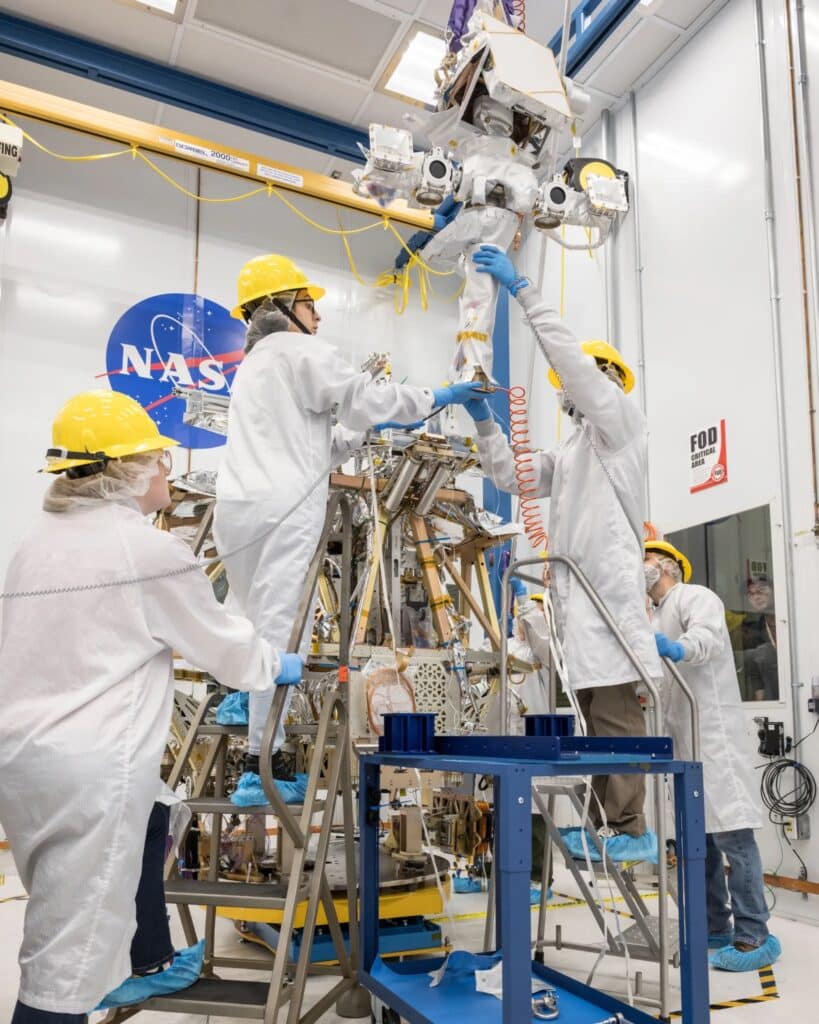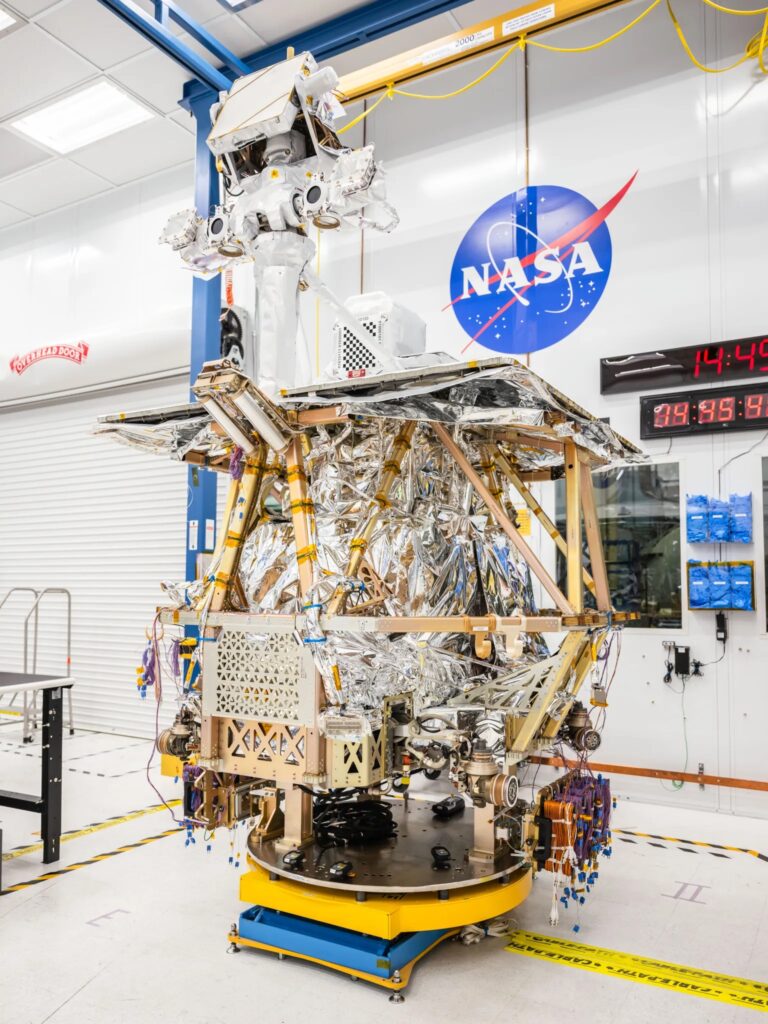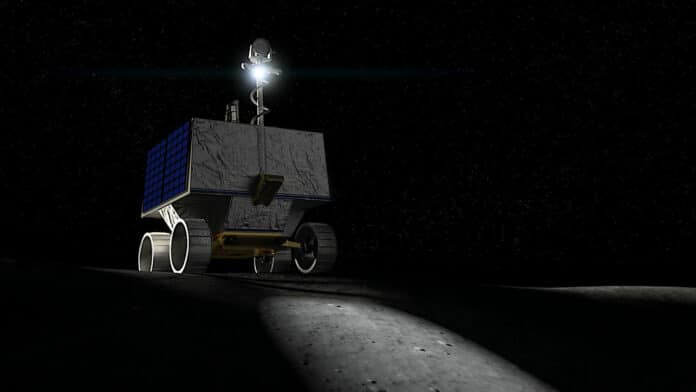NASA’s VIPER (Volatiles Investigating Polar Exploration Rover) is the first uncrewed rover set to explore the Moon later this year. Thanks to its mast, the VIPER now stands taller and more capable than ever. It will also be the world’s first planetary rover to be equipped with headlights.
VIPER‘s mast, which comes with a suite of instruments, looks quite similar to the rover’s neck and head. These instruments are specifically designed to aid the team of rover drivers and real-time scientists in sending commands and receiving data while the rover navigates through hazardous terrain on the lunar surface. They will use these instruments, along with four science payloads, to explore the lunar South Pole.
VIPER’s primary mission is to help us better understand the origin of water and other resources on the Moon and the extreme environment to which NASA plans to send astronauts as part of the Artemis campaign.

The tip of VIPER’s mast stands approximately eight feet (2.5 meters) above its wheel rims. It is equipped with various features, including a pair of stereo navigation cameras, powerful LED headlights, and low- and high-gain antennas to transmit and receive data from the Deep Space Network (DSN) antennas on Earth.
The navigation cameras are located on a part of the mast that can pan up to 400 degrees and tilt up and down up to 75 degrees. These cameras serve as the “eyes” of the rover, allowing the VIPER team to take sweeping panoramas of the rover’s surroundings and images to detect surface features such as rocks and craters as small as 10 cm in diameter from as far as 15 meters away.
Furthermore, the high-mounted cameras provide a near-human perspective as the rover explores areas of scientific interest around the Moon’s South Pole.
VIPER will be the first planetary rover to have headlights due to the extremes of light and darkness found on the Moon. The headlights are designed to cast a narrow, long-distance beam to help the team reveal obstacles or interesting terrain features that would otherwise stay hidden in the shadows. The blue LED arrays are positioned next to the rover’s two navigation cameras to provide the best visibility in the challenging lighting conditions on the Moon.
As part of its mission to explore the Moon, VIPER will rely on a precision-pointed, high-gain antenna to transmit large amounts of data across the 240,000 miles (384,000 km) that separate Earth and the Moon. In addition to this, the rover also has a low-gain antenna that sends data at a lower data rate. The antennas are designed to maintain the correct orientation even while the rover is in motion, which is crucial for the rover to receive commands and transmit data back to Earth.

Once the data is transmitted, it is received by the DSN and transferred to the Multi-Mission Operations and Control Center at NASA’s Ames Research Center in California’s Silicon Valley, where scientists can analyze and interpret it to achieve their mission goals.
Engineers put the mast through a variety of tests before installing it on the rover. They tested the white coating surrounding the mast in a thermal vacuum chamber to ensure that it insulates as intended. The team successfully performed check-outs of the mast’s components and sent data through the rover using its antennas.
VIPER is part of the Lunar Discovery and Exploration Program managed by NASA and will launch to the Moon aboard Astrobotic’s Griffin lunar lander on a SpaceX Falcon Heavy rocket as part of NASA’s Commercial Lunar Payload Services initiative. VIPER will reach its destination at Mons Mouton near the Moon’s South Pole.
